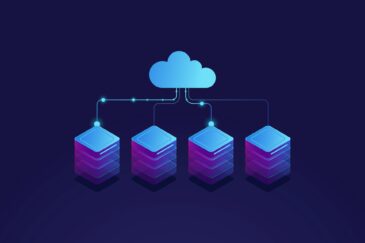Best Practices for an Oracle ERP Cloud Implementation

- March 24, 2022
- Jhansi Rani
- 0
Several organizations are moving their on-premises applications to Oracle ERP Cloud to reduce costs while driving growth, innovation, agility, and efficiency. In most cases, the best path is a complete move from on-premises applications to Oracle ERP Cloud, designed and built to support a modern digital business. Here are a few best practices for your Oracle ERP implementation journey with recommended steps and valuable advice based on our past experiences.
Define an Oracle ERP Cloud Roadmap
- A project definition establishes the foundation and defines the project goals, scope, risks, budgets, and staffing requirements with a general timeline and task allocation.
- The project team for cloud applications requires business process consultants and data analysts, who can configure and apply best practices, user responsibilities and roles, and built-in reporting and analytics.
- The project design documents the deployed applications, any third-party applications, and related systems that require integration. It also includes detailed data definitions, user requirements, and all the necessary business processes.
- The project rollout plan determines which business units and geographies will be covered and in what order. It also helps identify the essential requirements to take the new system live and into production.
- Effective project communications throughout the project life cycle build awareness and positive anticipation and support internal teams quickly adjust and get on board.
Implement the Project Roadmap
- Cloud applications focus on configuration rather than customization, so you need to configure data structures and hierarchies, organizations, and user roles and responsibilities.
- Integrating third-party solutions or legacy systems with cloud applications preserves prior investments and unique capabilities. Work with an Oracle ERP Cloud implementation partner as they may have existing integration frameworks.
- Moving data to the cloud requires ETL skills, and you must consider hiring an effective Oracle ERP Cloud implementation partner and using Oracle Enterprise Data Management Cloud to simplify data environments.
- Applications can be extended using Oracle Platform as a Service. It removes complexity for common types of integration, and extensions are preserved when the application is updated.
- Oracle ERP Cloud includes advanced reporting capabilities and predefined reports. Identify which reports can be replaced with real-time information and embedded analytics and which reports need to be generated and distributed.
- Having large amounts of custom code can keep you from getting the latest capabilities and increase running costs. In the cloud, small changes to current business processes can often eliminate the need for custom code.
Review Your Work
Once your Oracle ERP implementation is done, you must check your work against project requirements. It’s critical to confirm the quality and accuracy of the migrated data, critical workflows that drive your processes, and the security protocols. Verify that the job roles, positions, and titles are properly identified and implemented. The correct mapping of responsibilities with roles is critical for security and workflows.
Once you have determined that the implemented solution matches all aspects of the defined project, it’s time for user acceptance. Identify key stakeholders across business units who were involved in preparing the project’s definitions, and get their approval confirming that the project meets their requirements.
Ensure Readiness
Finish any last-minute system-related tasks and provide users with their usernames, passwords, and other information. Let them know how they can get help when the solution is up and running. Work with your Oracle ERP Cloud implementation partner to ensure organizational readiness by focusing on change management and training as needed.
Migrating to a cloud-based ERP solution requires a shorter readiness time than on-premises projects as there is less to do, which shortens schedules and reduces budgets. Review the critical objectives with the project steering committee and executive sponsor and confirm the date for go-live. Ensure that everyone is on board and communicate the decision across the organization. After the successful go-live, regularly measure and report system performance, document lessons learned, identify areas of improvement, and establish ongoing training to maximize system productivity and application knowledge.
Services
Products
Company
Copyright © 2024 Rite Software Solutions & Services LLC. All rights reserved.



